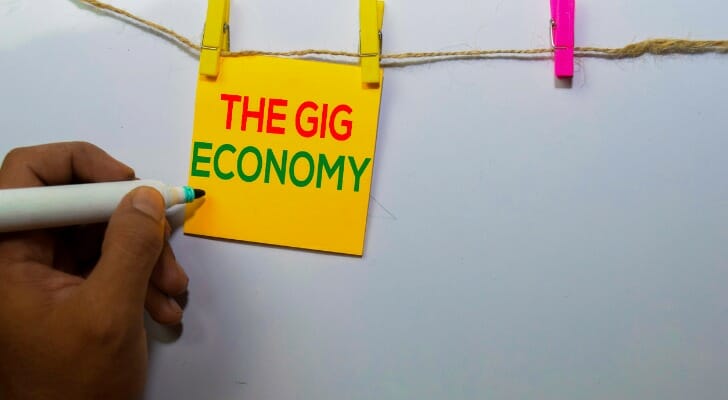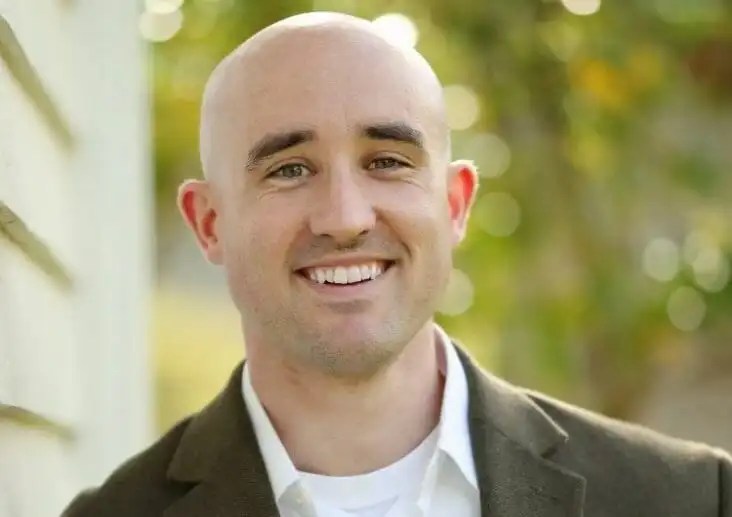

Ordinarily, only salaried employees who lose their jobs through no fault of their own are eligible to collect unemployment insurance. But the $2 trillion Coronavirus Aid, Relief, and Economic Security Act (CARES) Act expanded unemployment benefits to self-employed workers unemployed or underemployed because of the COVID-19 pandemic. Additionally, some SBA loan programs, including the new PPP loans, may be available to self-employed workers. Here’s how these benefits work.
Under normal circumstances, only full-time workers are eligible for unemployment if they lose their jobs. These workers’ employers withhold taxes from their paychecks that fund unemployment insurance programs. Non-traditional employees – including independent contractors, freelancers and gig workers – don’t contribute to unemployment insurance through withholding, so they don’t receive those unemployment benefits.
The Coronavirus Aid, Relief, and Economic Security (CARES) Act changed that. The bill contains a range of provisions intended to ease the economic fallout of the COVID-19 pandemic, including expansion of unemployment benefits. Specifically, it extends these benefits to “non-traditional” workers including:
Essentially, people who have never qualified for unemployment benefits now can. Section 2102 of the legislation specifically provides for people who are self-employed or seeking part-time employment; aren’t eligible for unemployment benefits and are unemployed; partially unemployed; or unable to work because of health or economic consequences of the pandemic.

Pandemic Unemployment Assistance (PUA) is the CARES Act program that specifically addresses non-traditional workers. PUA provides for up to 39 weeks of weekly benefits. Those eligible for it include people who:
The period of under- or unemployment must have begun on or after Jan. 27, 2020. Benefits are retroactive for periods of unemployment back to that date. However, benefits can’t be paid for unemployment after Dec. 31, 2020.
It’s still important that people be unemployed through a lack of available work. They can’t have left their job voluntarily. This includes quitting a job out of fear of contracting the virus. Generally, if an employer remains open and the applicant can come to work, they won’t qualify for PUA benefits.
There are several exclusions to this general rule, including someone who can’t come to work because:
Workers who can be paid for teleworking or who are getting sick-leave benefits would not qualify for PUA. Most states also require that the recipients have worked four out of the last five quarters.
Applicants can self-certify that they meet the requirements. However, fraud or intentional misstatements can be prosecuted under federal law.
The amount of the weekly PUA payment is equal to the benefit that would be provided by function of the state unemployment insurance program.
The PUEC section of the CARES Act provides for an extra $600 a week to be paid out on top of the regular state unemployment insurance benefit amount. The PUEC benefit increase applies to anyone who is receiving unemployment benefits. It’s not just for self-employed and gig workers covered by PUA.
PUEC benefits can be paid for no more than 13 weeks. And they cover periods of unemployment up to July 31, 2020.

The CARES Act is federal legislation, but people seeking benefits under it must apply to their state unemployment agencies. The U.S. Department of Labor has an online directory to state agencies here. Applicants can file in person, over the phone or online, depending on the state.
The speed with which the legislation was drafted and enacted has left state agencies scrambling to handle the volume of applicants. To help cope with the backlog, some states are setting aside specific days for applicants whose names begin with specific letters of the alphabet.
Some states have begun making payments. However, others are still getting the program rolled out and have yet to make any payments.
Benefits are paid retroactively. So successful applicants will receive benefits as of the date of their unemployment, not the date they are approved.
Applicants should be ready to supply the following information and paperwork when applying:
If approved for benefits, workers will have to re-certify weekly that they are unemployed. And if their work re-opens or other restriction keeping them from working is lifted, they are expected to return to work and stop receiving benefits.
The $2 trillion CARES Act also made benefits under the Paycheck Protection Program (PPP) available to the self-employed. The government designated $349 billion for the PPP as an SBA 7(a) loan, which can be forgiven. The loans feature a streamlined application process, less documentation and comparatively few restrictions.
However, by April 16 that $349 billion had been spoken after the SBA approved more than 1.6 million loan applications. The SBA stated on its website that it is “currently unable to accept new applications for the Paycheck Protection Program based on available appropriations funding.” Congress may appropriate more money for the program. If or when it does, you should know the following about PPP provisions for the self-employed.
Who may apply
PPP money is available for self-employed individuals, such as independent contractors or sole proprietors, who file an IRS Schedule C with their Form 1040 to report their self-employment income in 2019. These individuals can work alone or have employees. Applicants must have been in operation on Feb. 15, 2020, and have the U.S. as their principal place of residence.
Partners with self-employment income from partnerships are not eligible for PPP loans as self-employed individuals.
What the money is for
PPP money may be used for a wide variety of business expenses:
How to apply
Applications for PPP loans will technically be accepted until June 10, though as of this writing the SBA has reportedly told lenders to stop accepting applications as the program is close to running out of money. However, it’s thought that Congress will ultimately allocate more funding for the program.
The SBA has detailed instructions on how those who are self-employed should calculate the amount of money they are seeking to borrow. Borrowers can apply to any SBA-approved lender, including participating commercial banks and credit unions. A list of approved lenders can be found on the SBA website. Note that many lenders are limiting eligibility to those businesses with whom they have a pre-existing relationship, such as previous loans or a business checking account. Check out our list of participating banks and their requirements (we will continually update it).
What is eligible for forgiveness
You can apply for PPP loan forgiveness with your lender eight weeks after the loan is disbursed. Borrowed money spent on the following is eligible for forgiveness:
What about Economic Injury Disaster Loans?
You may use PPP money to refinance an SBA EIDL loan made between Jan. 31, 2020 and April 3, 2020. Your eligibility for an PPP loan is not affected if your EIDL loan was not used for payroll costs. If your EIDL loan was used to cover your payroll costs, your PPP loan can only be used to refinance your EIDL loan. Proceeds from any advance up to $10,000 on the EIDL loan will be deducted from the amount of the PPP loan that is forgiven.
The CARES Act makes state unemployment benefits available to self-employed, freelance, independent contractor and other gig workers unemployed or underemployed by the COVID-19 pandemic. Benefits are boosted by $600 over regular state benefits, and can be claimed for up to 39 weeks.
Photo credit: ©iStock.com/SolStock, ©iStock.com/ra2studio, ©iStock.com/syahrir maulana
Mark HenricksMark Henricks has reported on personal finance, investing, retirement, entrepreneurship and other topics for more than 30 years. His freelance byline has appeared on CNBC.com and in The Wall Street Journal, The New York Times, The Washington Post, Kiplinger’s Personal Finance and other leading publications. Mark has written books including, “Not Just A Living: The Complete Guide to Creating a Business That Gives You A Life.” His favorite reporting is the kind that helps ordinary people increase their personal wealth and life satisfaction. A graduate of the University of Texas journalism program, he lives in Austin, Texas. In his spare time he enjoys reading, volunteering, performing in an acoustic music duo, whitewater kayaking, wilderness backpacking and competing in triathlons.
Read More About Financial Advisor



More from SmartAsset
SmartAsset Advisors, LLC ("SmartAsset"), a wholly owned subsidiary of Financial Insight Technology, is registered with the U.S. Securities and Exchange Commission as an investment adviser. SmartAsset's services are limited to referring users to third party advisers registered or chartered as fiduciaries ("Adviser(s)") with a regulatory body in the United States that have elected to participate in our matching platform based on information gathered from users through our online questionnaire. SmartAsset receives compensation from Advisers for our services. SmartAsset does not review the ongoing performance of any Adviser, participate in the management of any user's account by an Adviser or provide advice regarding specific investments.
We do not manage client funds or hold custody of assets, we help users connect with relevant financial advisors.
This is not an offer to buy or sell any security or interest. All investing involves risk, including loss of principal. Working with an adviser may come with potential downsides such as payment of fees (which will reduce returns). There are no guarantees that working with an adviser will yield positive returns. The existence of a fiduciary duty does not prevent the rise of potential conflicts of interest.